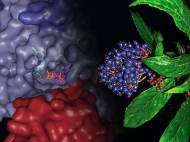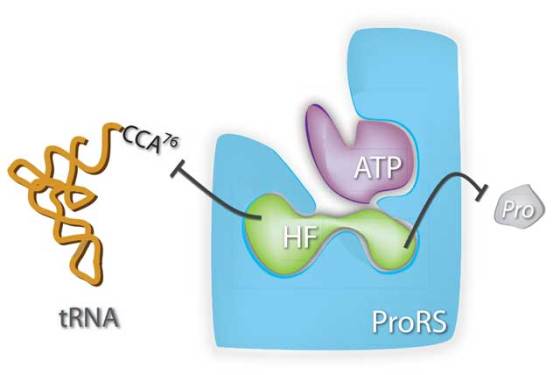Using high-resolution imaging to reveal Chang Shan secrets
 Researches from The Scripps Research Institute (TSRI), California, have determined a molecular structure that gives us a better insight into the mysterious inner workings of Chang Shan – a Chinese herbal medicine used for thousands of years to treat malaria related fevers. The researchers used high-resolution imaging technique to reveal atomic details of a two-headed compound derived from Chang Shan (Dichroa febrifuga Lour).
Researches from The Scripps Research Institute (TSRI), California, have determined a molecular structure that gives us a better insight into the mysterious inner workings of Chang Shan – a Chinese herbal medicine used for thousands of years to treat malaria related fevers. The researchers used high-resolution imaging technique to reveal atomic details of a two-headed compound derived from Chang Shan (Dichroa febrifuga Lour).
The derived compound is known as halofuginone, and it is known that it can suppress parts of the immune system, but its mechanism was unclear. The new findings show that halofuginone blocks a molecular mechanism that carries out “aminoacylation” – a crucial biological process that allows organisms to synthesize the proteins they need to live. It is assumed that Chang Shan helps with malarial fevers since traces of a halofuginone-like chemical in the herb interfere with the same process in malaria parasites, killing them in an infected person’s bloodstream.
“Our new results solved a mystery that has puzzled people about the mechanism of action of a medicine that has been used to treat fever from a malaria infection going back probably 2,000 years or more”, said Paul Schimmel, PhD, the Ernest and Jean Hahn Professor and Chair of Molecular Biology and Chemistry and member of The Skaggs Institute for Chemical Biology at TSRI.
Aminoacylation is a crucial step in synthesis of proteins, which are composed of smaller building blocks called amino acids, joined together in chains. Each protein has its own unique amino acid sequence that is determined by the sequence of nucleotides in the gene encoding this protein. Genes encoded in DNA are first transcribed into RNA, and the RNA is then translated into proteins.
A necessary component of protein translation are a set of molecules called transfer RNAs (tRNAs), which transfer amino acids onto the growing protein chain where they are added like pearls on a string. However, the tRNAs can shuttle amino acids in place only when it have the amino acids linked to it. The correct amino acid is added to its tRNA by a specific enzyme called an aminoacyl-tRNA synthetase. This process is called aminoacylation and it uses adenosine-5′-triphosphate (ATP) as an energy source.
TSRI researchers have found that halofuginone gets its potency by interfering with the prolyl-transfer RNA synthetase (ProRS), an enzyme that attaches the proline amino acid to the appropriate tRNA. It does this by blocking the active site of the enzyme where both the tRNA and the amino acid come together. Therefore, halofuginone blocks the binding of these two substrates to the enzyme.
“Interestingly, ATP is also needed for the halofuginone to bind. Nothing like that has ever been seen in biochemistry before. This is a remarkable example where a substrate of an enzyme (ATP) captures an inhibitor of the same enzyme, so that you have an enzyme-substrate-inhibitor complex”, said Schimmel.
Schimmel and his research team have been examining the molecular details of aminoacylation for years. Their findings have given scientists insight into everything from early evolution to possible targets for future drug development. Although halofuginone has been previously used in cancer clinical trials, the newly revealed molecular structure suggests it could be modified to create new drugs for numerous other diseases.
For more information, read the article published in the journal Nature: “ATP-directed capture of bioactive herbal-based medicine on human tRNA synthetase”.










Leave your response!